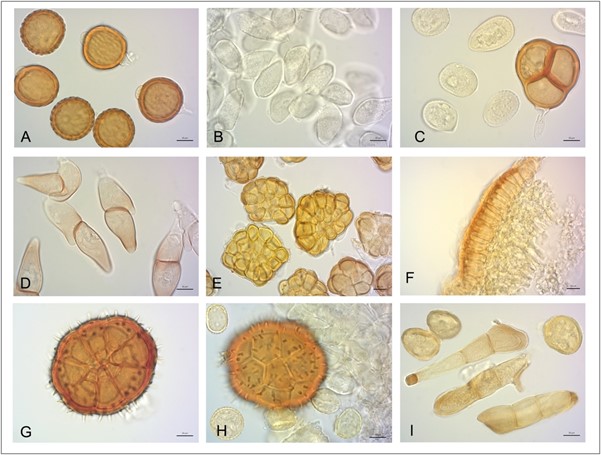FuTur

Description and aim of the project.
Type specimens are specimens of organisms based on which new species have been described. The "types" define the characteristics of a species, they are its standard, so to speak, and are therefore among the most valuable specimens in natural history collections. The principle of typification ensures that species names are unique in biological systematics and are used uniformly worldwide. Because of their fundamental importance, type specimens are examined more frequently than other specimens, in the case of fungi usually destructively by making microscopic preparations or extracting nucleic acids. This destructive use clashes with the collections' task of preserving the specimens in the long term.
The FuTuR project was carried out from 2019 to 2023 in cooperation between the ETH Library and the FungariumZ+ZT of the United Zurich Herbaria. It served to record all type specimens of rust fungi in the FungariumZ+ZT, to clarify their type of status and to digitize the collection data and microcharacteristics of the fungi and make them available in a database. Macro and micro photos were taken of the actual objects, showing the features of the fungi that are important for identification. Collection data and photos were entered into the NAHIMA database, which is used to record and present the holdings of the natural history collections of ETH Zurich.
Results
The entire rust fungus collection of the FungariumZ+ZT has been included in the NAHIMA database and can now be viewed in the form of approx. 60,000 data records. These include the 762 type specimens of rust fungi held at the FungariumZ+ZT with approx. 3,000 associated macro- and microphotographs taken as part of FuTuR. Scientists all over the world have the opportunity to view the data of all rust fungus specimens stored in Zurich and to study the characteristics of the type specimens online without having to produce microscopic specimens themselves. The digitization of all type specimens of a complete group of fungi - in this case the rust fungi - at microscopic level is a novelty and underlines the importance of the FungariumZ+ZT as a focal point collection for plant-parasitic fungi in Switzerland and beyond.